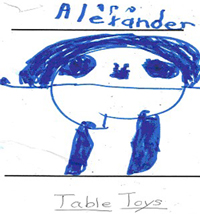What is Tools?
In Tools of the Mind, learning how to learn is as important as learning academic content and skills
Tools in a Nutshell
Tools of the Mind is a research-based early childhood model combining teacher professional development with a comprehensive innovative curriculum that helps young children to develop the cognitive, social-emotional, self-regulatory, and foundational academic skills they need to succeed in school and beyond.
Tools of the Mind is designed to support the development of all young children. Tools currently serves over 30,000 children in PreK and K classrooms that run the gamut from small rural school districts, to large urban ones including Washington DC; and from elite private schools, to publicly funded programs serving children from low-resource families.
The Approach
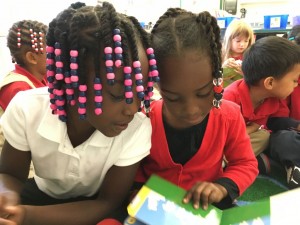
Tools of the Mind gives teachers the tools to ensure every child becomes a successful learner, developing the underlying cognitive, social and emotional skills needed to reach his or her highest potential. Melding Vygotskian theory with cutting edge neuroscience research, Tools is a unique approach to teaching and learning with research demonstrated outcomes for children and teachers.
Tools of the Mind is based upon a specific set of beliefs about how children develop and learn. Tools instructional interactions are designed to help teachers be more effective in identifying teachable moments, assessing children’s development and differentiating instruction. Tools teachers focus on helping children become intentional and reflective learners, creating a classroom in which instruction in literacy, mathematics and science reflect children’s learning capacity, rather than age-level expectations.
Tools combines a comprehensive early childhood curriculum with an innovative approach to teacher professional development to effectively transform early childhood teaching and learning, and improve child outcomes.
The Approach in Action: PreK
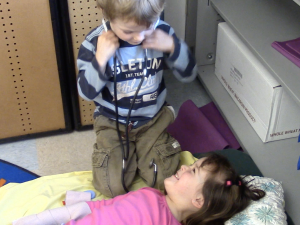
In a Tools PreK classroom, a play theme unifies the room. The year begins with adaptable play themes close to children’s lives, and over the course of the year, as children’s levels of make-believe play, self-regulation and executive functions develop, the play themes develop as well. In a classroom in Maine, a lobster pound was a favorite center; in another classroom in Washington D.C., a convenience store with a ‘Redbox’ and an ATM machine was a favorite center. Teachers construct themes with children. Children help make the props and signs, and teachers read books to build children’s knowledge of what people do and say in different themed settings. Intentional make-believe play is the heart of a Tools of the Mind PreK classroom, but there’s lots more going on in a day! Children engage in activities designed to support the development of literacy, math and science skills at the same time as self-regulation and executive functions skills are developed. Most learning takes place in small groups and partnered activities, engaging children in interacting with one another to learn, build social relationships and create a positive classroom culture.

Play Planning is a good example of the Tools approach to designing activities to develop foundational executive functions and self-regulation skills, at the same time as core academic skills are developed. Tools activities, like Play Planning, are multi-level, designed to challenge and support each child at his own level. Children who are developing typically and those who have special needs are engaged in the same activity, performing at a challenge level appropriate to each child.
In Play Planning, children plan their play before playing in centers. A Play Plan typically describes the role and actions a child will engage in during the first few minutes of intentional make-believe play. This initial plan helps children act purposefully–-the first step to becoming self-regulated learners.
Play Plans also support children’s literacy development. As children plan their play, they draw a picture of their plan that helps them remember what they are going to do. For Vygotskians, drawing is an important precursor to writing. These drawings gradually become more representational as children use their pictures to review previous plans, and discuss their plans with other children. As children learn more about literacy, they begin to represent their intentions using the Tools approach to writing: Scaffolded Writing.
PreK Play Plans
Alexander
At the beginning of the year, Alexander draws a picture of himself and says the name of the center he wants to go to. By January he can draw more detail and his message tells more about his plan. He begins to use Scaffolded Writing to convey his message. By March, Alexander is hearing and recording initial sounds in all of his words.
Ariana
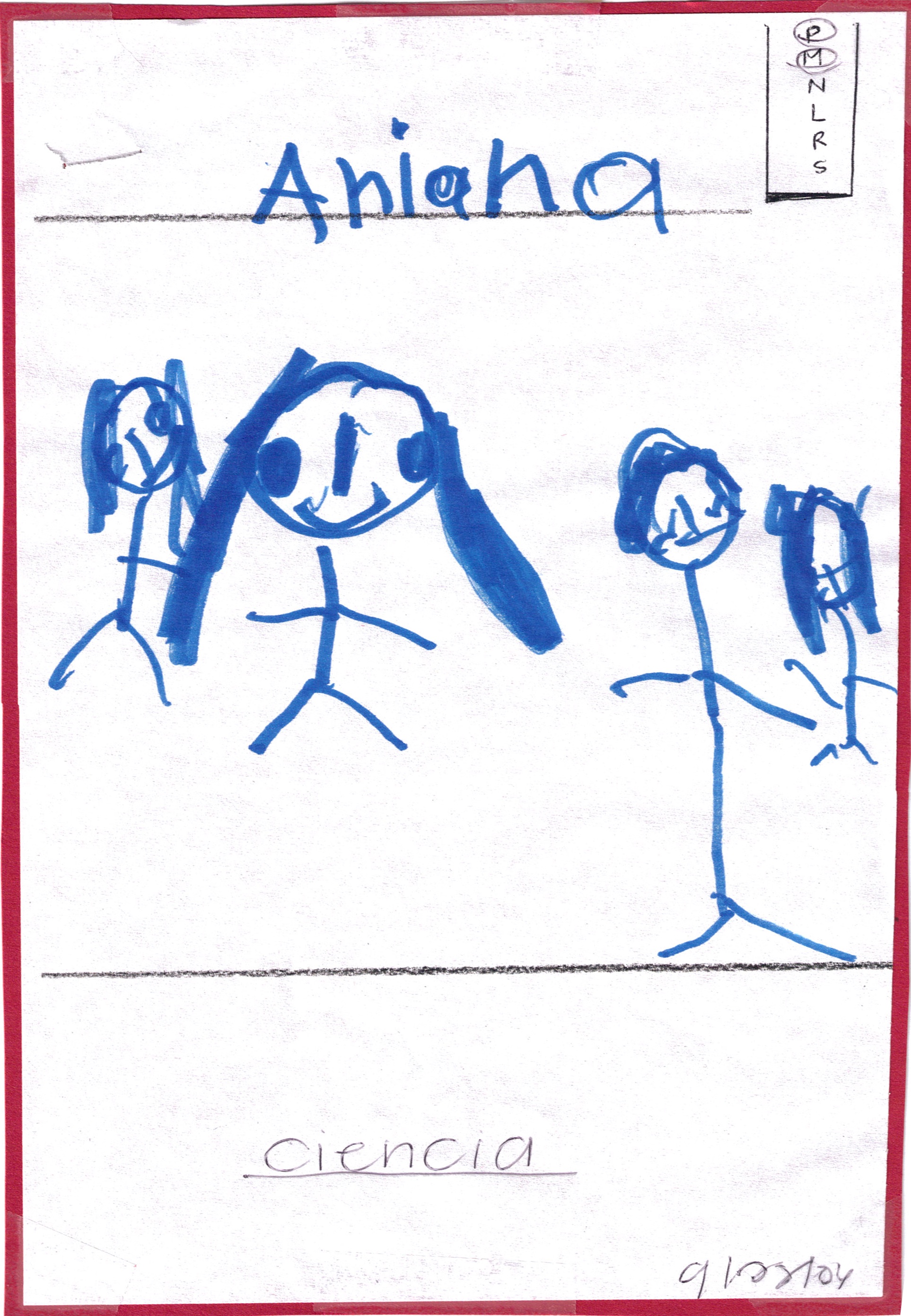
September

March

June
In the fall, Ariana draws herself and chooses the science center. In March she draws a more detailed picture and uses Scaffolded Writing to represent her message. She writes the sounds she hears in words in her native language, Spanish. Teachers encourage children to use their native language whenever possible. Her final message is I am going to paint a rainbow; Yo voy a pintar un arco iris.
Amari
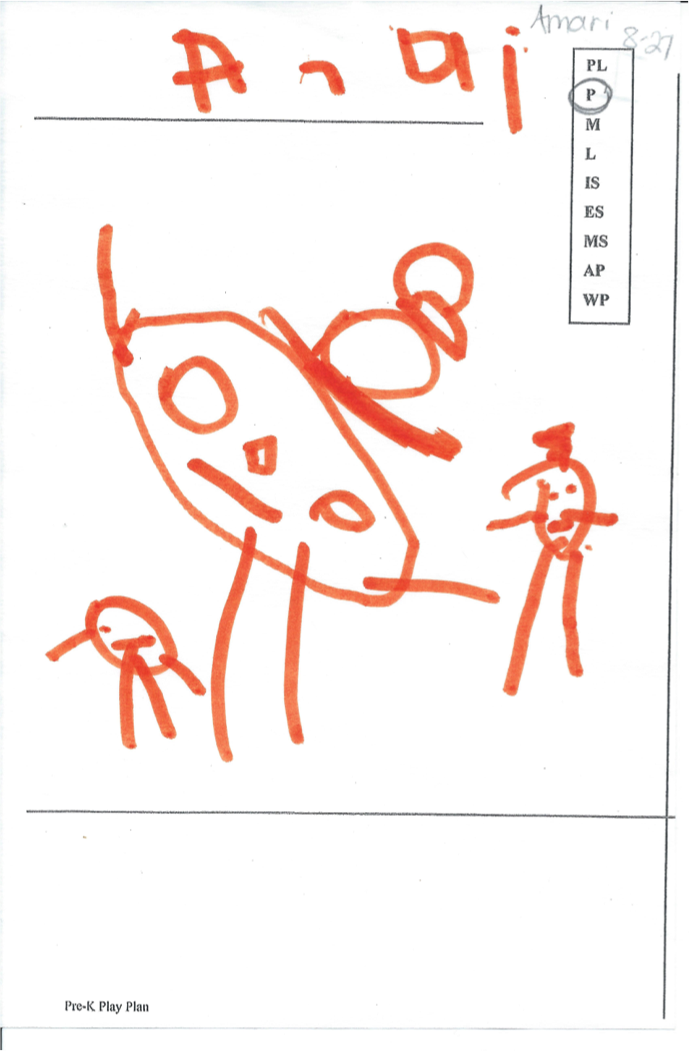
August
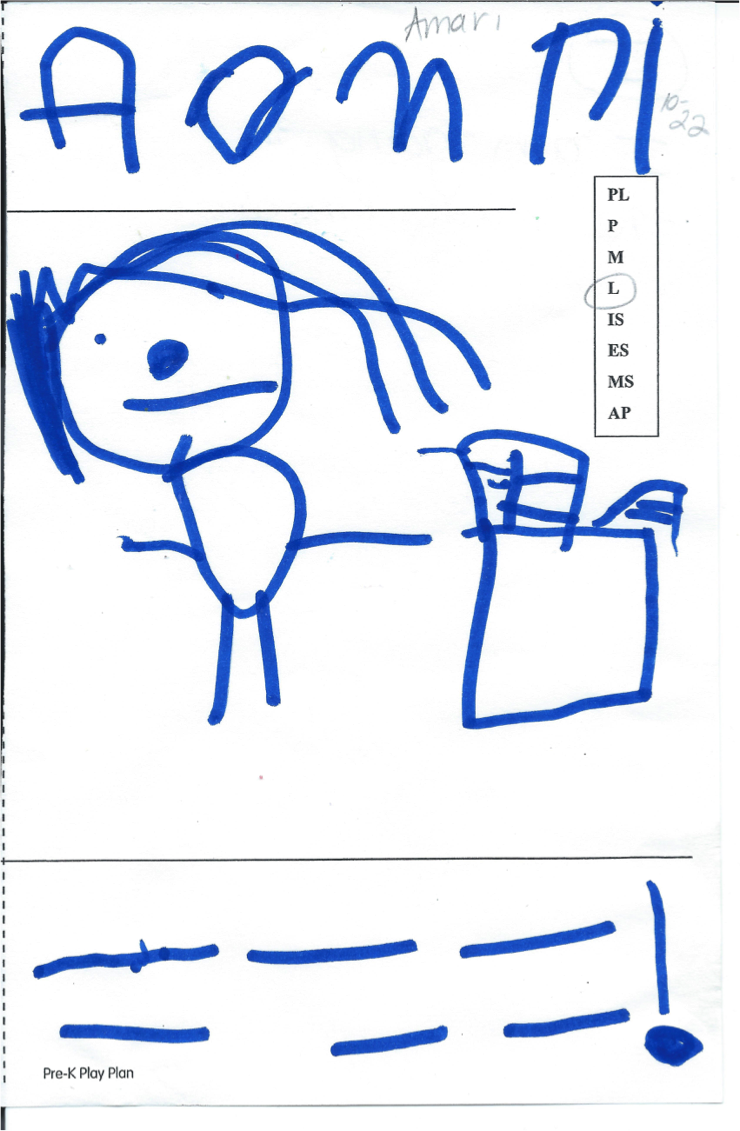
October

May
At the beginning of the year, Amari represents her plan with a picture. In October, she has drawn her plan (going to ‘measuring cups!’) with a line representing each word. In May, Amari uses letters to represent the sounds in her message, “I am going to make the medicine.”
The Approach in Action: K

Children work with teachers in small groups to build foundational skills for reading, and write daily using the Tools approach to writing; Scaffolded Writing, receiving individualized instruction from the teacher targeting each child’s current level of development. A mystery message arrives in the classroom mailbox each day for group decoding practice, and children receive individual and paired reading instruction from the teacher.
 Children explore form and function in science activities––investigating differences in teeth, feet, animal tracks, camouflage and adaptation in multiple habitats. They learn about the arctic tundra, savannahs, rainforests, the layers of the ocean, and the moon, and develop all the math skills in the Common Core in games designed to build academic, executive functions and self-regulation skills at the same time. The Tools approach to supporting self-regulation and executive functions development is woven across all activities, and the teacher’s approach to classroom management. Observing in a Tools kindergarten classroom, you see children well on their way to being independent self-regulated learners, who will leave kindergarten with the skills they need to be successful in school and life.
Children explore form and function in science activities––investigating differences in teeth, feet, animal tracks, camouflage and adaptation in multiple habitats. They learn about the arctic tundra, savannahs, rainforests, the layers of the ocean, and the moon, and develop all the math skills in the Common Core in games designed to build academic, executive functions and self-regulation skills at the same time. The Tools approach to supporting self-regulation and executive functions development is woven across all activities, and the teacher’s approach to classroom management. Observing in a Tools kindergarten classroom, you see children well on their way to being independent self-regulated learners, who will leave kindergarten with the skills they need to be successful in school and life.
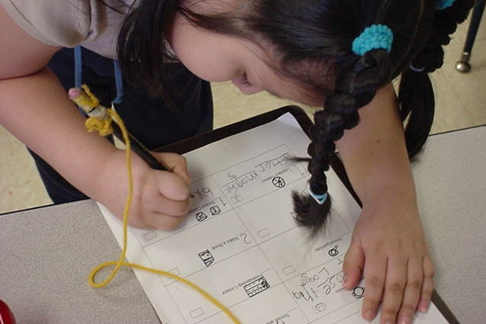
Spotlight: K Activity
At the kindergarten level of Tools of the Mind, Learning Plans are a good example of the Tools approach to designing K curriculum––creating activities with a dual purpose: to develop children’s foundational executive functions and self-regulation skills, at the same time they develop core academic skills. Learning Plans allow children to plan the work they will accomplish each day, and set individual learning goals for the week. Center activities are designed to engage children in playful, purposeful learning with a partner or small group, and are followed by individual Learning Records which children complete and file in individual folders. Children have a ‘Study Buddy’ who helps them remember what they are going to do, checks to be sure they’ve completed the activity, looks at their Learning Record, and listens to how and where goals are being met.
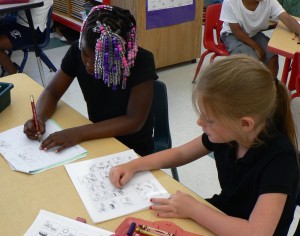
In kindergarten, children use Scaffolded Writing, the Tools approach to writing, to write facts they learned or summarize the events in a chapter book read aloud to them. Children recall different events and facts, and are at different stages of writing development. Some have learned to represent each word with a line, others are incorporating their understanding of phonemes and writing using estimated spelling. The teacher works with each child one-on-one, providing individual scaffolding tuned to the child’s current level of development.
Kindergarten Student Work
In the example shown below, a kindergarten class is studying “The Ocean,” and has read books about oysters. Children are then asked to write facts that they remember from the books. Children recall different facts and illustrate what they write. The children are in different stages of writing development. Some have learned voice-to-line match, and many have begun to incorporate word patterns into their writing.
Estimated spelling shows children’s understanding of phonemes in words and their understanding of the alphabetic principle. This estimated spelling is eventually replaced by conventional spelling. Research on estimated spelling demonstrates that its use in kindergarten is correlated with higher reading achievement scores in later grades. This estimated spelling is later replaced with more conventional spelling, as children begin to learn word patterns and receive formal spelling instruction in first and second grades.


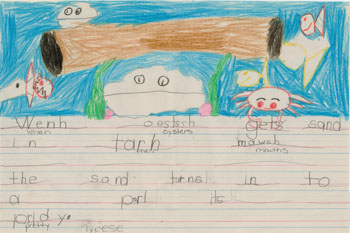
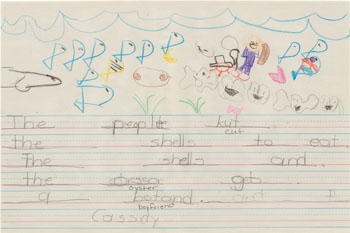


Note: Children in Tools are not given any words or phrases to copy; instead, they are encouraged to write their own unique messages, representing the sounds in words with as many letters as they are able.
